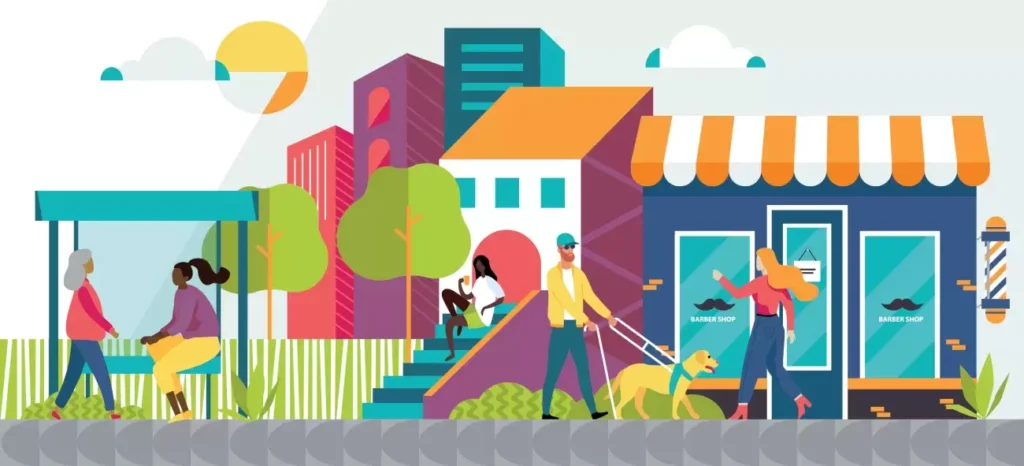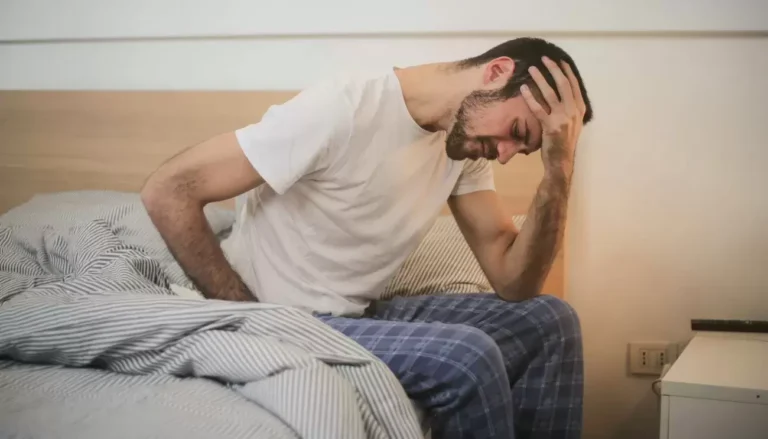Did you know that your ZIP code plays a role in your health? It might surprise you to hear that up to 60% of your health is determined by where you live. Your neighborhood, along with your town and larger geographical region, impacts your sense of community and belonging, and determines how easily you can access the things and services you need, including for your mental health.
Access to quality resources
One of the biggest ways your location can impact your mental health is how easy or hard it is to access the things you need. This includes healthy food, safe outdoor space, quality medical care, and public transportation (which still may not get you where you need to go in a reasonable amount of time even when you do have access). Because local income taxes usually fund public services, low-income areas are often under-resourced in quality education, road maintenance, community programs, and more, which can make it difficult for people to meet their basic needs. Black, Indigenous, and people of color (BIPOC) and other marginalized communities often feel these strains the hardest.
- Roughly 6% of people in the U.S. live in a food desert, which is an area with limited options to get affordable and healthy food. Food deserts often lead to food insecurity, which is associated with increased stress and depression. In young adults, food insecurity often co-occurs with suicidal thoughts and substance use.
- Each year, 3.6 million people in the U.S. go without health services because they don’t have a car, access to public transportation, or another way to get appointments.
- A study on community recreation centers in California found that lower-income neighborhoods had lower-quality facilities and fewer no-cost youth programs.
What can I do to get access?
- Get to know your neighbors. The people living around you can be a big help when you need something. You can support each other with carpools, running errands, or sharing resources.
- Connect with a group in your area where community members share and exchange services. You may be able to find an organized mutual aid program, or you can search for a local Facebook or NextDoor group focused on community support.
Gentrification and poverty
Gentrification is when a low-income neighborhood quickly changes as wealthier people and businesses move into the area. This often forces out long-time residents and businesses as rent, mortgages, property taxes, and the general cost of living rise. People and business who are forced to move – particularly within the BIPOC community – generally end up in lower-income and under-resourced areas.
- A 2020 study found that adults living in gentrified neighborhoods – particularly renters, low-income residents, and long-term residents – were at increased risk for serious psychological distress compared to those in low-income, ungentrified neighborhoods.
- Hospitalization rates for mental health conditions, including schizophrenia and mood disorders, are two times higher in people displaced by gentrification compared to those who remain in their neighborhood.
- A study on New York City neighborhoods found a 22% higher rate of anxiety or depression among children who started life in areas that gentrified than among children in areas that did not gentrify, even when controlling for income and rent.
What can I do to protect my neighborhood?
- Support local businesses. Locally owned businesses – from coffee shops to grocery stores to home services – keep communities going. By shopping locally, you help them stay open.
- Stay connected. If you are forced to relocate, try to stay connected to your original community or the people you knew from it. Many gentrified neighborhoods previously had a strong community identity and culture, and maintaining those social ties can protect your mental health.
Social connection
Feeling a sense of connection is crucial for your mental well-being. While you can find this with many people and in many places, the people you live near can provide community and social support. Your physical closeness to neighbors allows for spontaneous interactions and shared interests, which can lead to genuine friendship. Strong community among neighborhoods and nearby residents protects mental health through shared support, resources, and joy. On the other hand, you may be in a neighborhood without community, feel like an outsider, or lose your community because of gentrification – all of which can have be harmful to mental health.
- In low-income and under-resourced areas, community bonds often predict the mental health of residents. Strong social ties within neighborhoods protect well-being by fostering a sense of teamwork and community care.
- Of children living in neighborhoods that parents perceived as “not supportive,” about 18% had a diagnosed mental health condition, compared to 13% of those living in supportive neighborhoods.
What can I do to make nearby social connections?
- Be a friendly neighbor. It sounds obvious, but taking the first step to wave or say “hello” can be the beginning of a fulfilling connection. You can also try to organize group gatherings.
- Seek out places within your neighborhood or town. Where can you find safety, comfort, or connection? Think outside of the box of where you can find people with similar interests or commonalities to you. These could be parks, places of worship, barber shops, tattoo parlors, cafes, or libraries.
Community safety
There are many reasons people might feel unsafe in their local surroundings, including violence and mass shootings, police presence and brutality, and discrimination and harassment. These safety concerns may prevent people from engaging in outdoor or community activities, which can be harmful to physical and mental health. Even if you haven’t dealt with fear or violence yourself, witnessing or hearing about it can still impact you. The Centers for Disease Control and Prevention recently defined community violence as a “critical public health problem,” and the World Health Organization has recommended adding exposure to community violence (ECV) as a new adverse childhood experience (ACE) category.
- People across the U.S. are on edge, with a quarter of Americans living in fear of being attacked in their own neighborhoods. Youth exposed to repeated community violence are less engaged at school and more likely to suffer from anxiety and depression.
- Many predominantly BIPOC neighborhoods are over-policed, causing chronic stress and hypervigilance. This policing is often focused on low-level offenses like traffic stops or curfew violations, which research shows does not reduce crime rates but does risk escalating to police violence and cause community trauma.
- LGBTQIA2S+ people living in rural areas are less likely to have protections, such as nondiscrimination laws, and more likely to have discriminatory laws, like religious exemption laws that allow service providers to discriminate.
What can I do to feel safe in my community?
- Focus on community care. Crime occurs in areas where people don’t have their needs met. While you can’t fix everything, you can take part in keeping your neighborhood safe by providing support and resources and advocating for harm repair over punishment.
- Identify safe people. Being prepared can help alleviate anxiety and fear. Know who your allies are and who you can count on if you find yourself in danger.
Nowhere is perfect, and every community faces challenges at one point or another. Stressing over your well-being in your neighborhood can take a toll on your mental health. If you find that the area you live in is worrying you or constantly on your mind, take a screen at mhascreening.org to see if you might be showing early signs of a mental health condition.
Take a mental health test
Online screening is one of the quickest and easiest ways to determine whether you are experiencing symptoms of a mental health condition.
See more Mental Health Month resources
Learn more about how your surroundings and environment impact your mental health.


